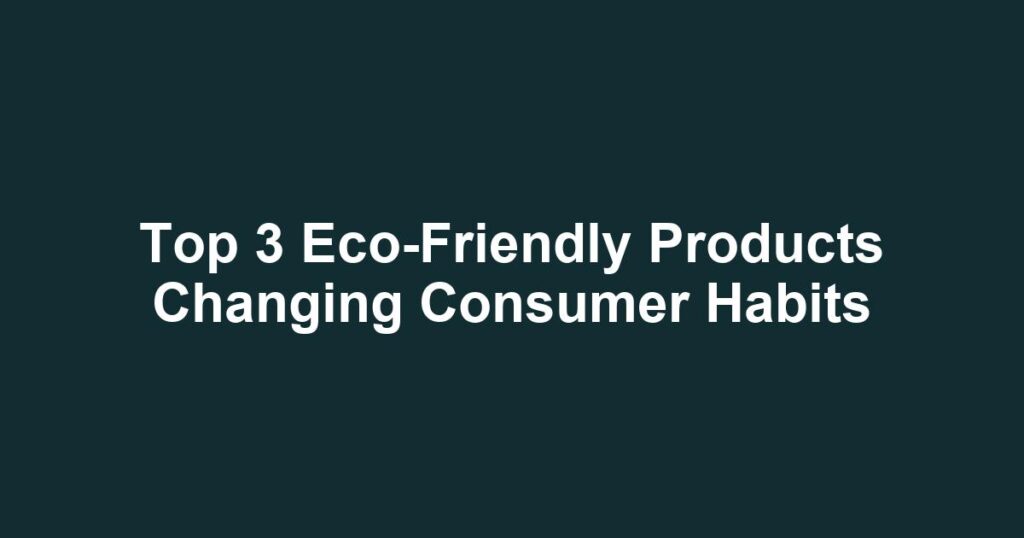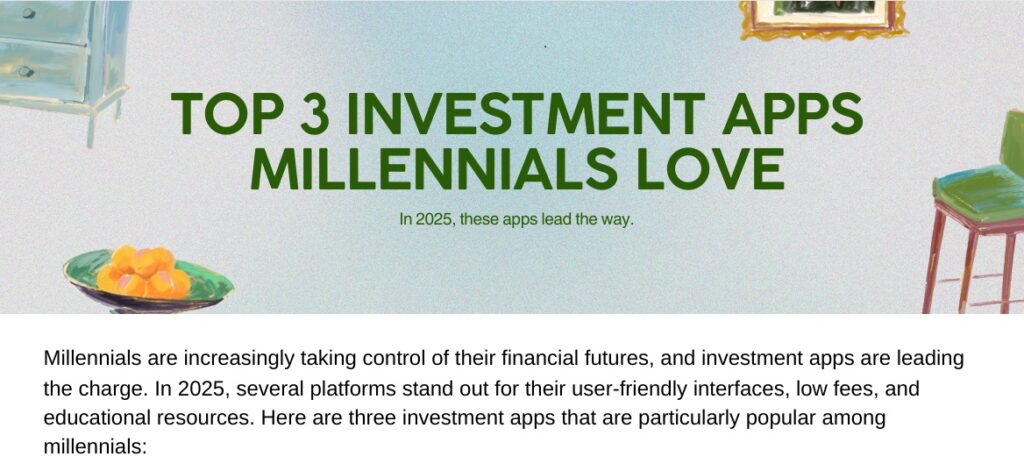Top 3 Eco-Friendly Products Changing Consumer Habits
As the awareness of climate change and environmental issues rises, so does the demand for eco-friendly products. Consumers are becoming more conscious about their purchasing decisions, shifting towards sustainability in their everyday lives. In this article, we’ll explore the top three eco-friendly products that are not only changing consumer habits but also setting trends in the marketplace.
Understanding Eco-Friendly Products
Before we dive into the top products, it’s essential to understand what eco-friendly products are. These are items designed to have minimal impact on the environment, promoting sustainability and responsible consumption. They often come from renewable resources, are biodegradable, or are made using sustainable manufacturing processes.
Why Are Eco-Friendly Products Important?
- Help reduce waste and pollution.
- Encourage sustainable practices among consumers.
- Support the shift towards renewable resources.
- Empower consumers to make a positive impact on the environment.
1. Reusable Food Storage Solutions
One of the most significant changes in consumer habits has been the shift from single-use plastics to eco-friendly reusable food storage solutions. With millions of tons of plastic ending up in landfills annually, many consumers are looking for better alternatives.
Types of Reusable Food Storage Options
- Silicone Bags: These are a versatile alternative to plastic bags and can be used for both freezing and cooking.
- Beeswax Wraps: Ideal for wrapping food items, beeswax wraps are biodegradable and replace plastic wrap use.
- Glass Containers: Perfect for storing leftovers, glass containers are durable, easy to clean, and do not leach chemicals into food.
How to Transition to Reusable Food Storage
Transitioning to reusable food storage doesn’t have to be overwhelming. Here are some practical steps to ease into it:
- Start with one type of reusable product, like beeswax wraps.
- Gradually phase out single-use plastic bags and containers.
- Educate family and friends about the benefits of using these sustainable options.
2. Eco-Friendly Personal Care Products
Personal care products have often been a source of environmental strain due to their packaging and ingredients. However, a surge in eco-friendly options is changing consumer preferences and habits.
What Are Eco-Friendly Personal Care Products?
- Bamboo Toothbrushes: Wooden toothbrushes that are biodegradable and reduce plastic waste.
- Shampoo Bars: Solid shampoo bars come with less packaging and often use natural ingredients, eliminating the need for plastic bottles.
- Reusable Makeup Remover Pads: Reusable pads reduce waste compared to traditional cotton pads, making your skincare routine more sustainable.
How to Choose Eco-Friendly Personal Care Products
When selecting eco-friendly personal care products, consider the following:
- Look for products with minimal or recyclable packaging.
- Choose items with natural or organic ingredients.
- Research brands committed to sustainable practices.
3. Sustainable Clothing
The fashion industry is one of the dirtiest sectors in terms of pollution and waste. However, eco-friendly clothing brands are rising, revolutionizing consumer habits in the industry.
What Is Sustainable Clothing?
- Made from Organic Materials: Clothing made from organic cotton, bamboo, or hemp reduces reliance on chemicals and pesticides.
- Ethical Manufacturing: Brands that ensure fair wages and safe working conditions for their workers.
- Timeless Designs: Focused on quality over quantity, sustainable clothing aims to create timeless pieces that last longer.
How to Build a Sustainable Wardrobe
Here are some tips for incorporating sustainable clothing into your wardrobe:
- Invest in high-quality staple pieces that won’t go out of style.
- Opt for thrifted or second-hand clothing to reduce waste.
- Research and support brands that prioritize sustainability.
Trends in Eco-Friendly Products and Consumer Habits
With the rise of eco-friendly products, there are significant trends shaping consumer habits. Understanding these trends can help you stay ahead in both personal choices and business perspectives.
Trending Practices in Eco-Friendly Consumption
- Conscious Consumerism: Consumers are making informed choices and seeking transparency about products and brands.
- Minimalism: A desire to reduce clutter and possessions has led to more intentional buying, focusing on quality.
- Zero Waste Lifestyle: Many are adopting practices aiming to eliminate waste almost entirely, influencing their purchasing decisions.
How to Adapt to Changing Consumer Habits
As consumer habits evolve, here are some actionable ways you can adapt:
- Stay informed about new eco-friendly products and market trends.
- Embrace a mindset of sustainability in your personal and community practices.
- Encourage discussions about environmental consciousness among peers and within your family.
Conclusion
The shift towards eco-friendly products is reshaping consumer habits and driving trends that support sustainability. By embracing reusable food storage, eco-friendly personal care, and sustainable clothing, you are not only making personal purchases but also contributing to a more sustainable future. Making informed choices can feel empowering, and you’ll join a growing community dedicated to preserving our planet.
Are you ready to make the switch to eco-friendly products? Start today by choosing one product that resonates with you and watch how it transforms your purchasing habits! For more insights and discussions on sustainability, stay connected with us.
Now that you know the transformative power of eco-friendly products, what are you waiting for? Take action and help lead the way towards a more sustainable lifestyle!

